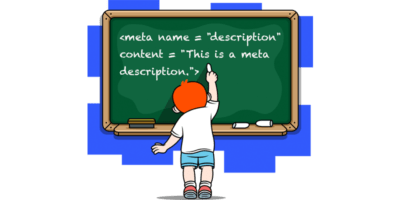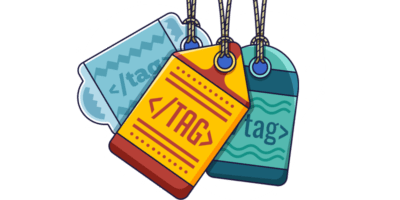
Here’s how the code snippet looks:
<meta name="description" content="Site Explorer runs on a huge database of 12 trillion links and 402 million tracked keywords to give you the most complete SEO data about any website or URL.">
Even though the meta description attribute is not a ranking factor and Google shows it in search results only 37% of the time, it’s still a part of on-page SEO that content publishers often encounter.
In this guide, you’ll learn how to create great meta descriptions fast and how to audit them efficiently. But first, let me explain why meta descriptions still matter despite their seemingly low SEO importance.
- Why meta descriptions still matter
- How to write a meta description
- How to prioritize meta description creation and editing
- Great meta description examples
Having a compelling meta description entices more people to click on your website in the search results. That’s important, even though Google only shows meta descriptions in 37% of the time.
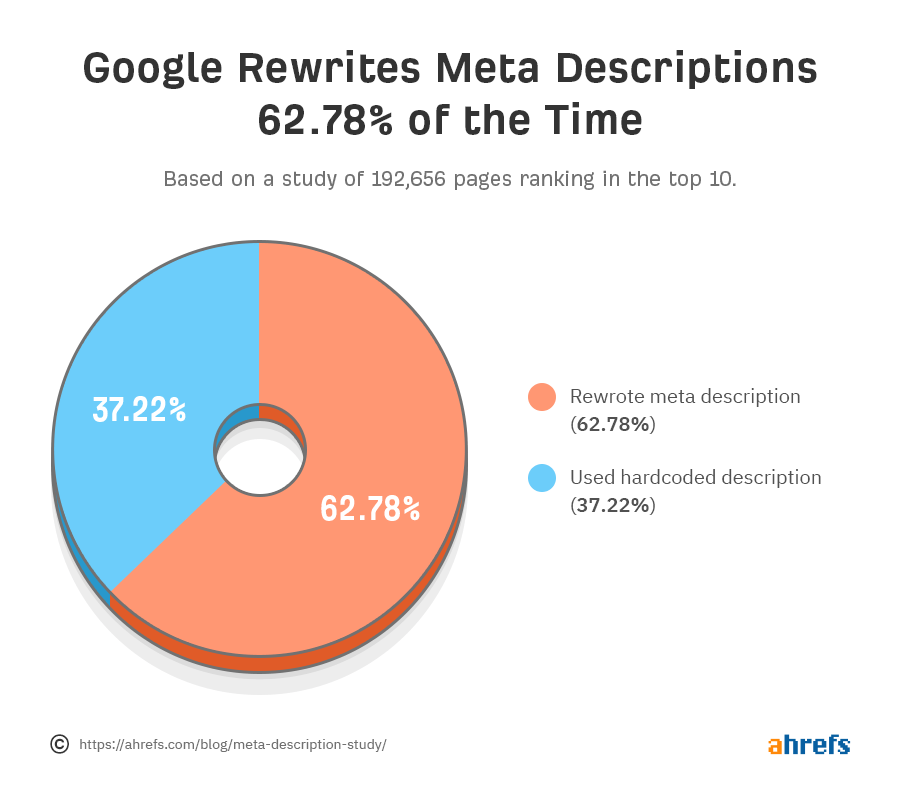
For example, if your page gets 50,000 impressions a month, Google shows the meta description for 18,500 of those impressions on average. Increasing your CTR from 4% to just 4.5% in this instance would result in almost 100 more clicks.
So while you shouldn’t obsess over meta descriptions, it’s still worth spending a minute of your time on pages where ‘yes’ is the answer to at least one of these questions:
- Is the page meant to drive organic traffic?
- Is it likely to be shared on social media?
That second question probably needs an explanation.
You see, when a page is shared on social media, it pulls the description from Open Graph meta tags.
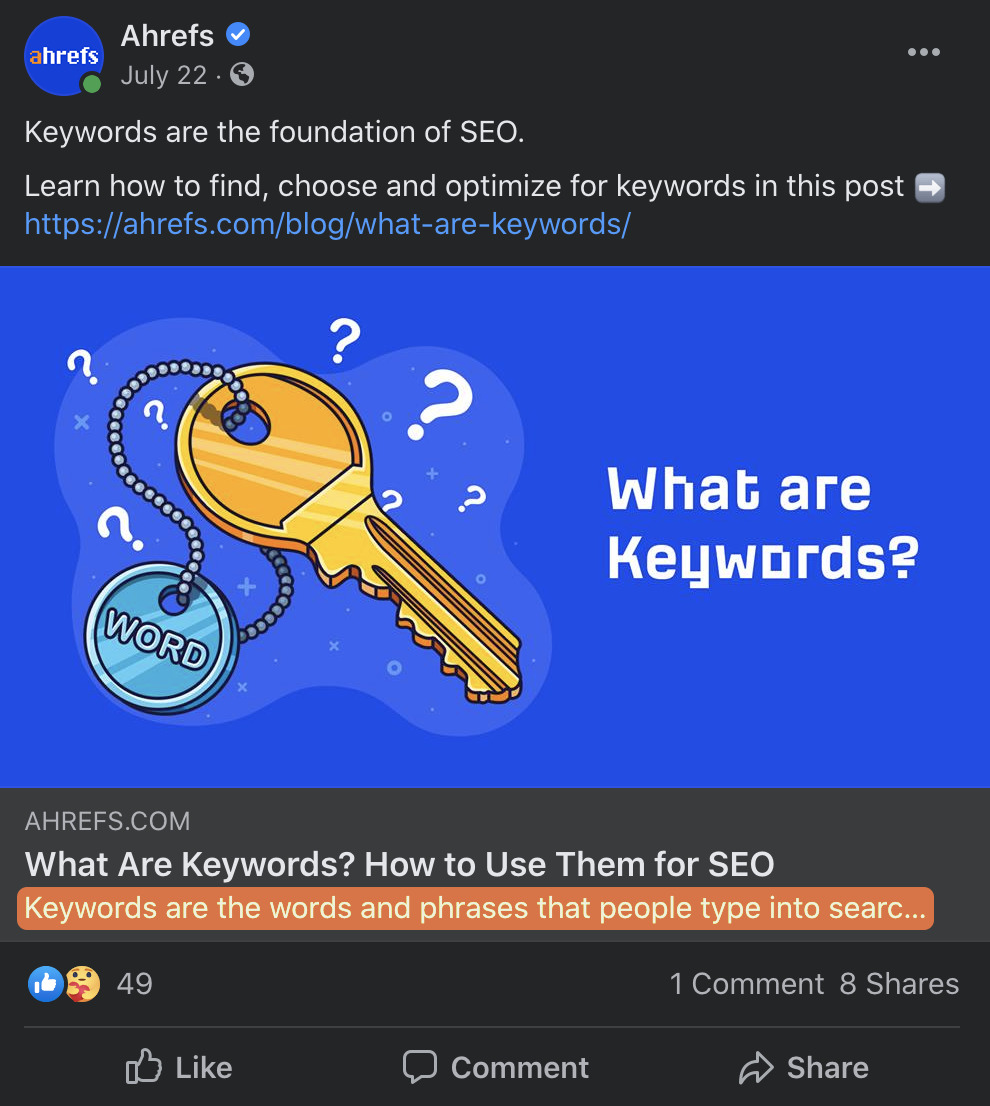
But if you haven’t set an OG or Twitter description, it pulls the meta description instead. So if you’re only willing to make an effort to set one of these tags, it should be the meta description.
Onto the creation process.…
Follow these five steps to create your meta descriptions quickly and easily:
Let’s get into it.
1. Expand on your title tag
Always think about the description as something that complements the title tag. Titles should summarize a page using a few main keywords that characterize the topic. The meta description offers a chance to expand on that further.

In the case above, the short description motivates users to click on our broken link checker because:
- It checks pages and websites.
- It takes internal and external links into account.
- The tool is fast.
- It’s not a lead generation trap; you can use it on the page right away.
Don’t worry about shoehorning keywords here. It’s more important that you create something that connects with the reader and entices the click. Use your USPs where suitable.
2. Match search intent
Search intent is the ‘why’ behind a query. In other words, what are most people looking for when they search for your main keyword?
- Do they want information?
- Do they want to buy something?
- Are they looking for a specific website?
- Do they want a quick answer to a question?
You can use the search results as a proxy for this. Google strives to provide the most relevant results for searchers, so look for commonalities amongst the snippets of top-ranking pages.
For example, almost every result for “meta description” shows a definition in the snippet…
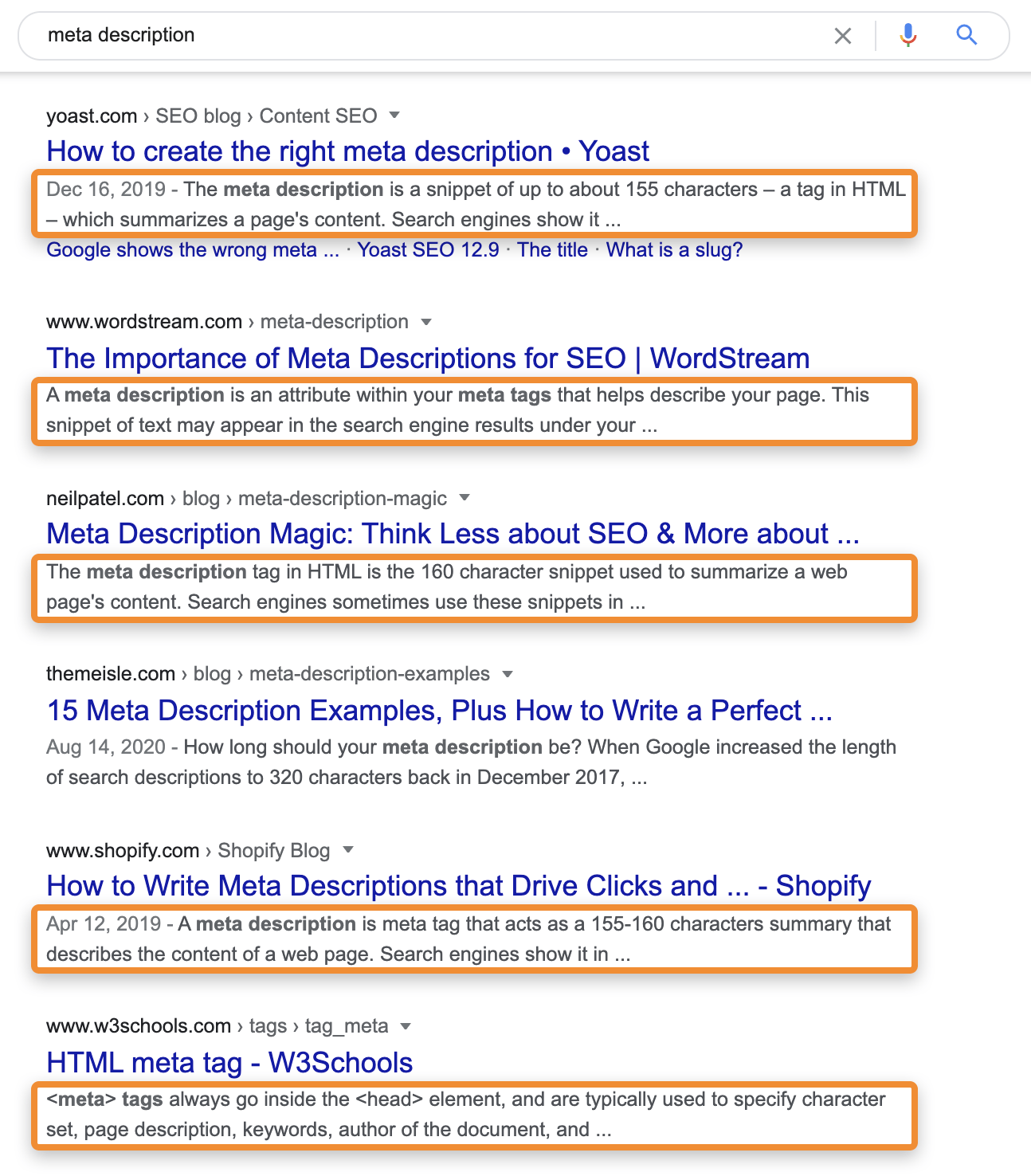
…so we’ll go with that as well.
Other SERPs may not be as straightforward, but you can always pick up on some clues. Let’s take a look at “how to tie a tie”:
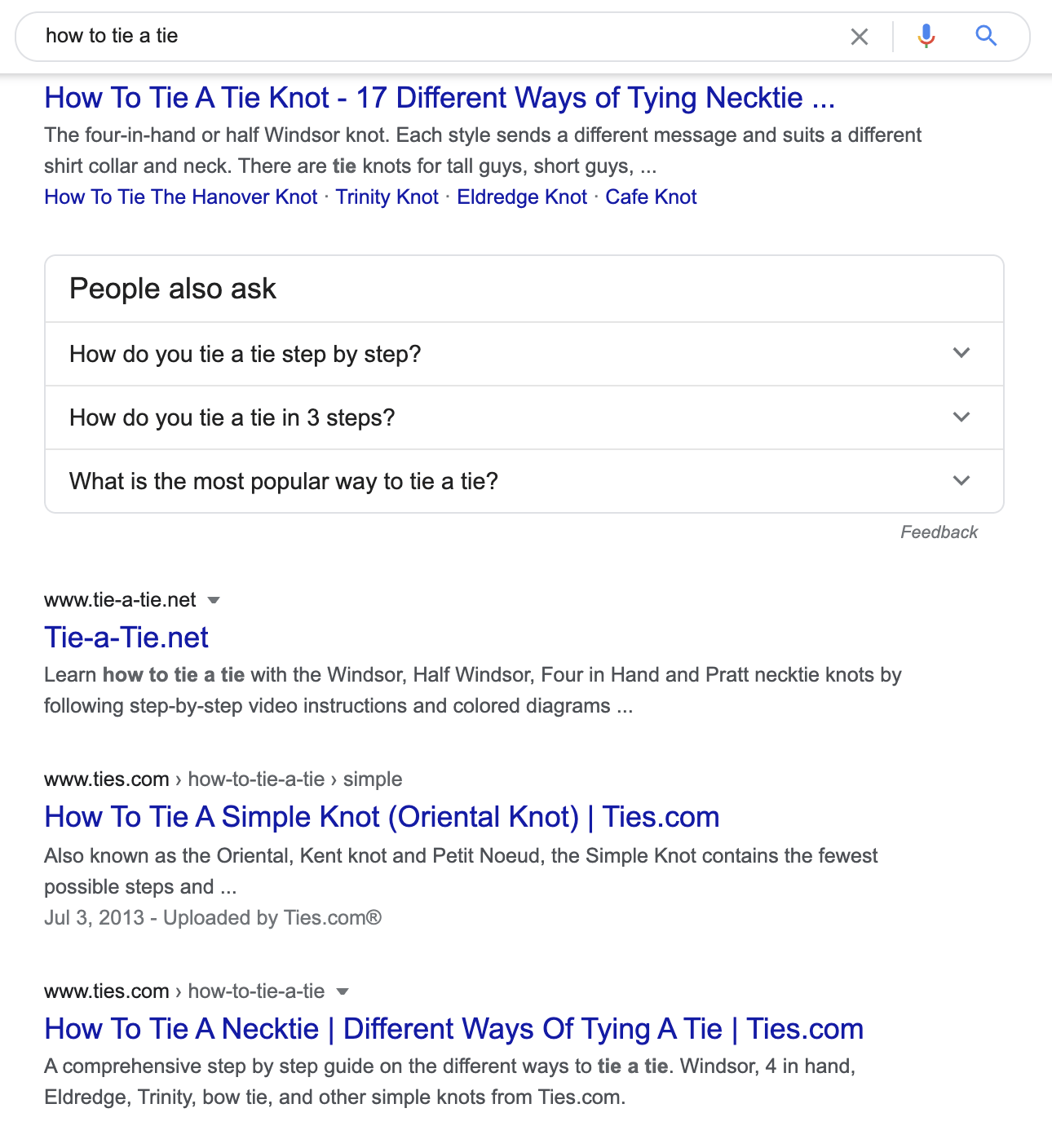
All the snippets talk about different types of knots, and most mention how the post includes step-by-step instructions. That tells us these things are probably important to searchers and are worth including in a meta description.
Just be careful with mixed intent SERPs like “standing desk.”
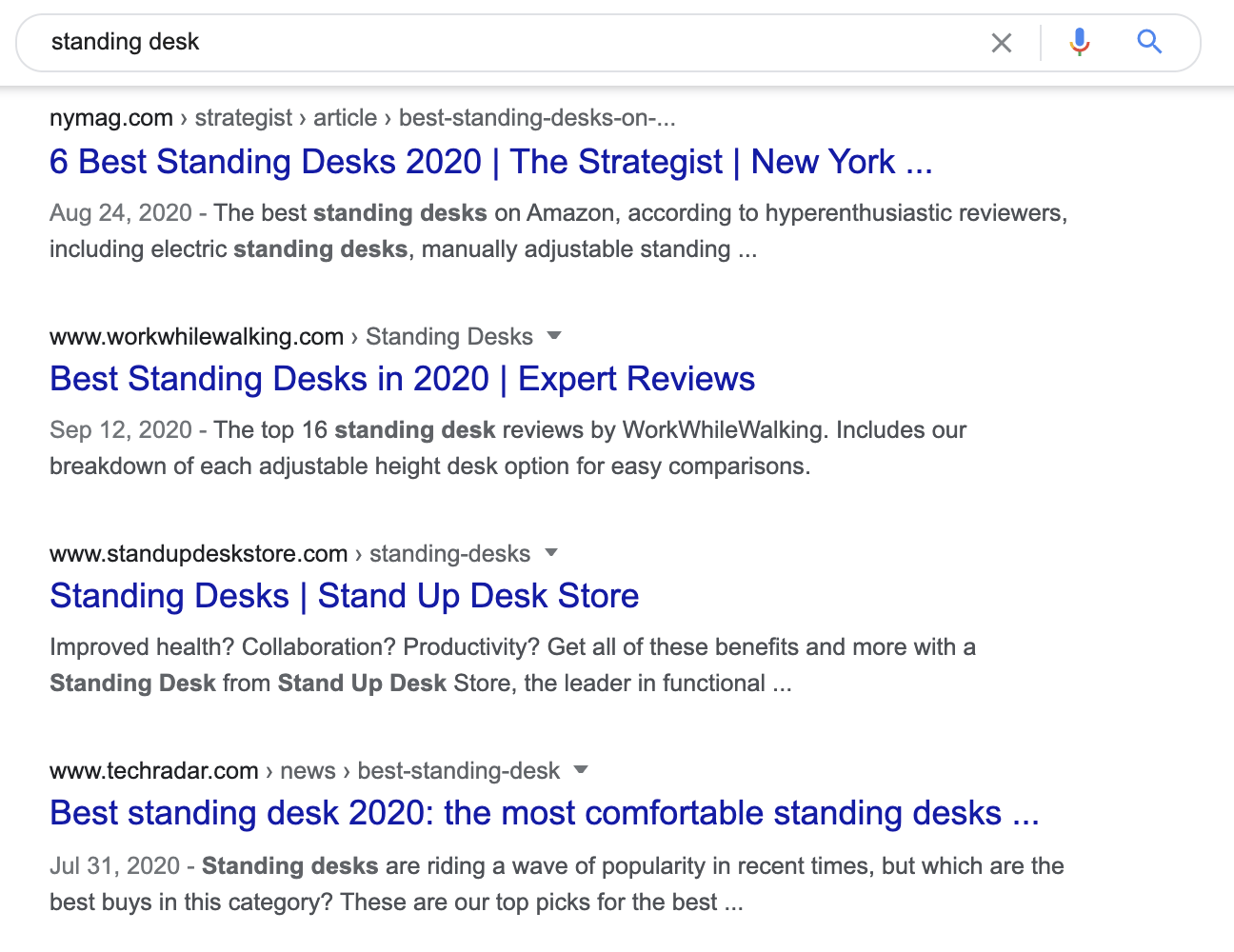
You can see that there’s a mix of results here. Some are blog posts reviewing the best standing desks, and others are product category pages from online stores.
In cases like this, you should take inspiration from the page snippets that most closely align with the type of content you’re publishing. If you’ve written a blog post about standing desks, look at the review and comparison posts. If you’ve created an ecommerce category page, look at those.
3. Use active voice
Active voice improves clarity and entices the click by addressing the searcher directly.
Here’s an example:

You can see that it starts with a verb and makes the searcher the subject of the sentence. In other words, it’s the searcher who’s performing the action.
Now look at this:

Compared to the first example, it’s dull and demotivating. That’s because it’s written in the passive voice.
Of course, it’s not always wise to write meta descriptions in an active voice. Case in point: definition-style descriptions. But as a general rule of thumb, passive voice is more the exception than the rule.
Learn more about the difference between active and passive voice here.
4. Be concise
Meta descriptions are not a place for storytelling. Every word matters because users quickly decide what to click on by skimming the results and because descriptions truncate after a certain length.

Right now, that length is 920px (~160 characters) on desktop and 680px (~120 characters) on mobile. Your best bet to keep them within length is to use a tool like this one, or a WordPress SEO plugin like Yoast with the functionality built-in.

Whether you’re better off optimizing for mobile or desktop users depends on your audience. If you generally go for longer descriptions for desktop users, make sure to get to the point by ¾ of the length so even mobile users can see it.
What’s the takeaway here? Be concise for users, not search engines. The length limit is a good signal that there might be unnecessary words.
5. Deploy the meta description
If you’re using a CMS, this is super easy. In Wix, Squarespace, Shopify, and most others, you’ll find a place to type or paste your meta description in the backend.
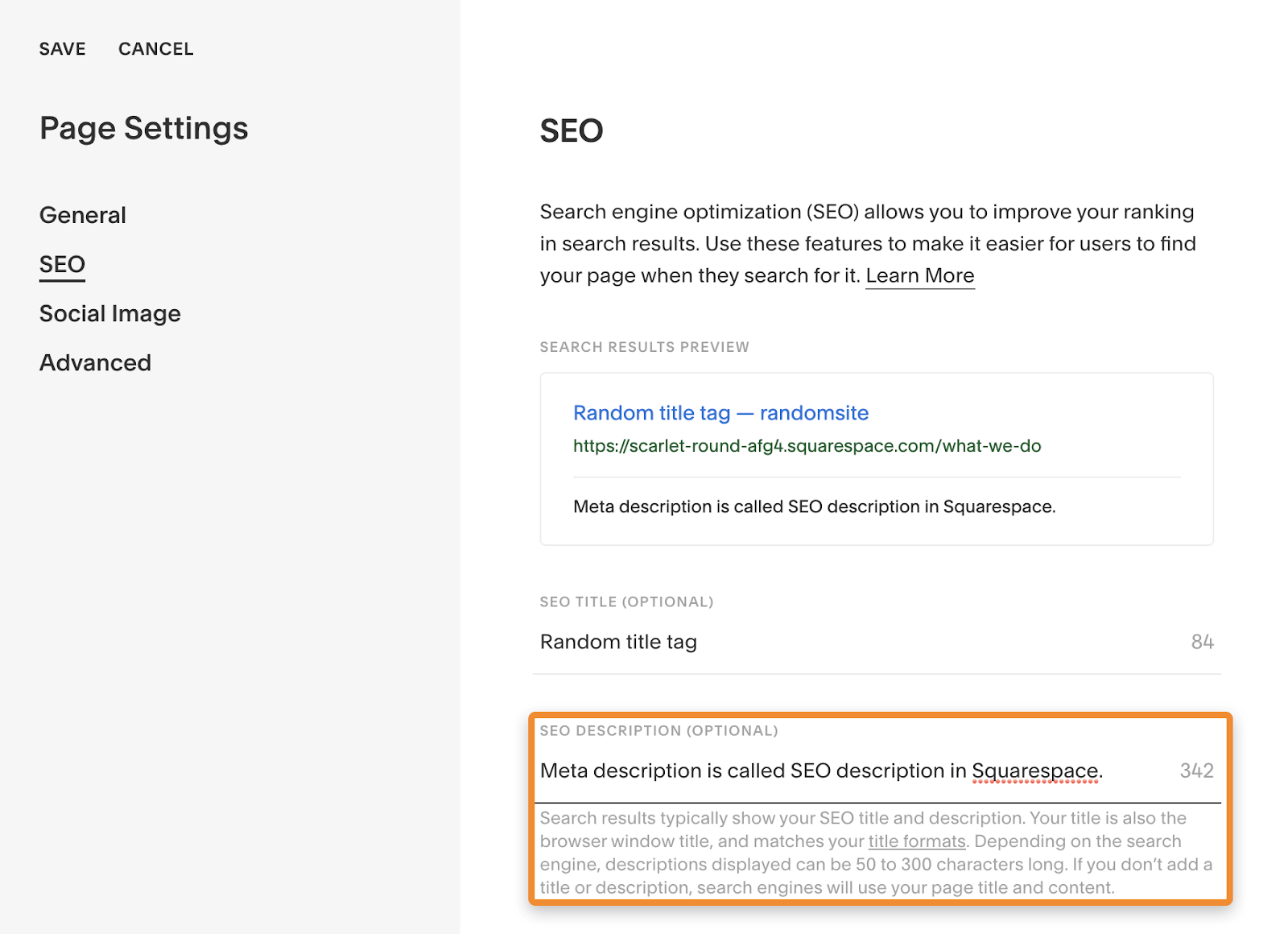
In WordPress, plugins like Yoast and RankMath add this same functionality.
If you don’t use a CMS, just paste the meta description tag into the <head> section of your HTML code.

If you’re adding the meta description straight into the code, don’t use quotation marks in the description itself because it will break things. Instead, use the HTML entity " so it looks like this:
<meta name="description" content="Just showing how to use "quotation marks" in meta description.">
If you use quotation marks when adding a meta description in CMS and plugins, they will usually take care of the HTML transcoding for you.
During the publishing process is not the only time you should take meta descriptions into account. You might already have pages that have a bad meta description or none at all.
There’s no point in auditing your whole website for meta descriptions. Instead, focus on pages that get the most search traffic. That’s when a better meta description can make a real difference.
You can find these pages in Ahrefs Webmaster Tools. Just make a free account, run a crawl with Site Audit, then go to Page Explorer and apply these filters:
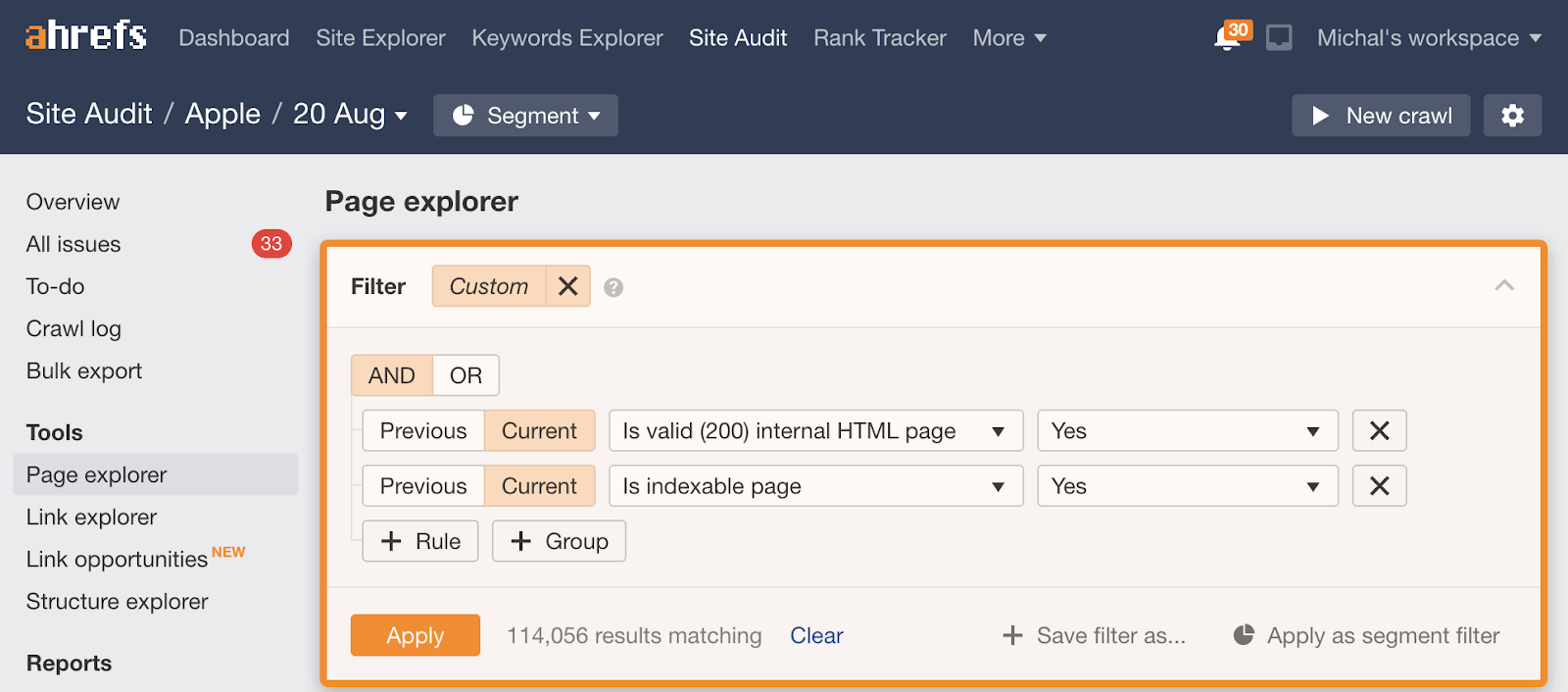
Next, click on the “Manage columns” button and select “Organic traffic,” “Meta description,” and “Meta description length”:
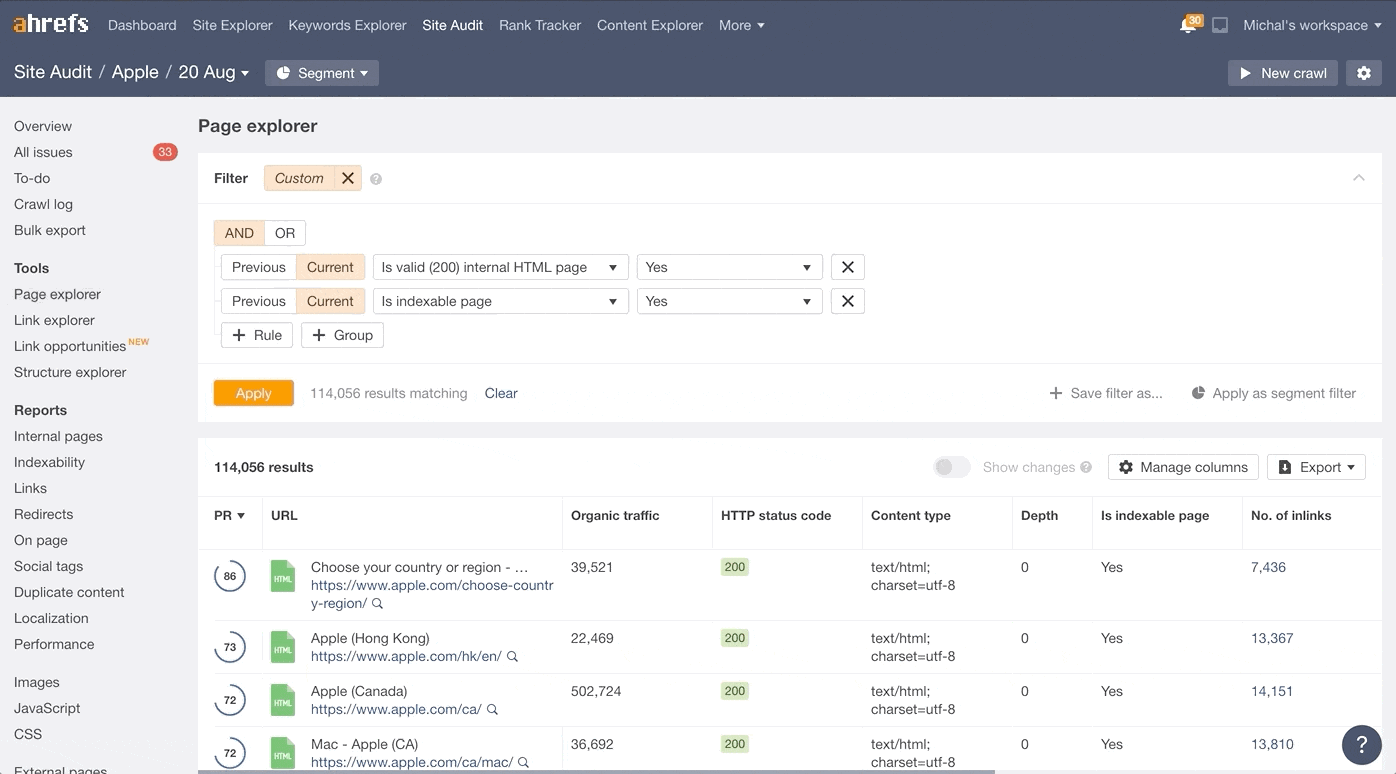
Finally, sort the pages by their organic traffic:
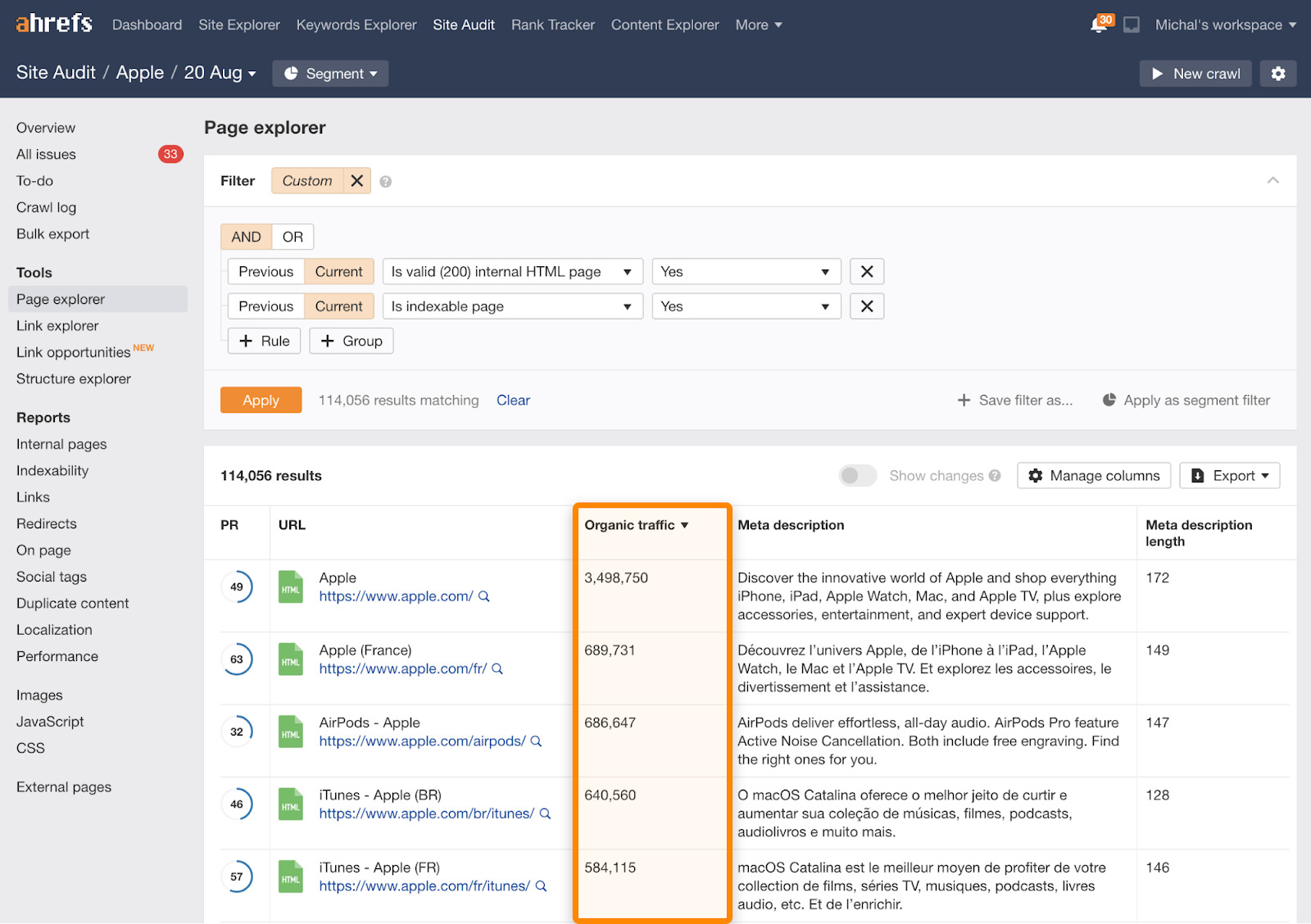
Now you’re looking at your most important meta descriptions. Check for those that aren’t great or that are missing entirely.
While I recommend this “catch-all” method, you can also choose only to check missing meta descriptions. And that’s even easier as they’re reported directly in the On-page report:
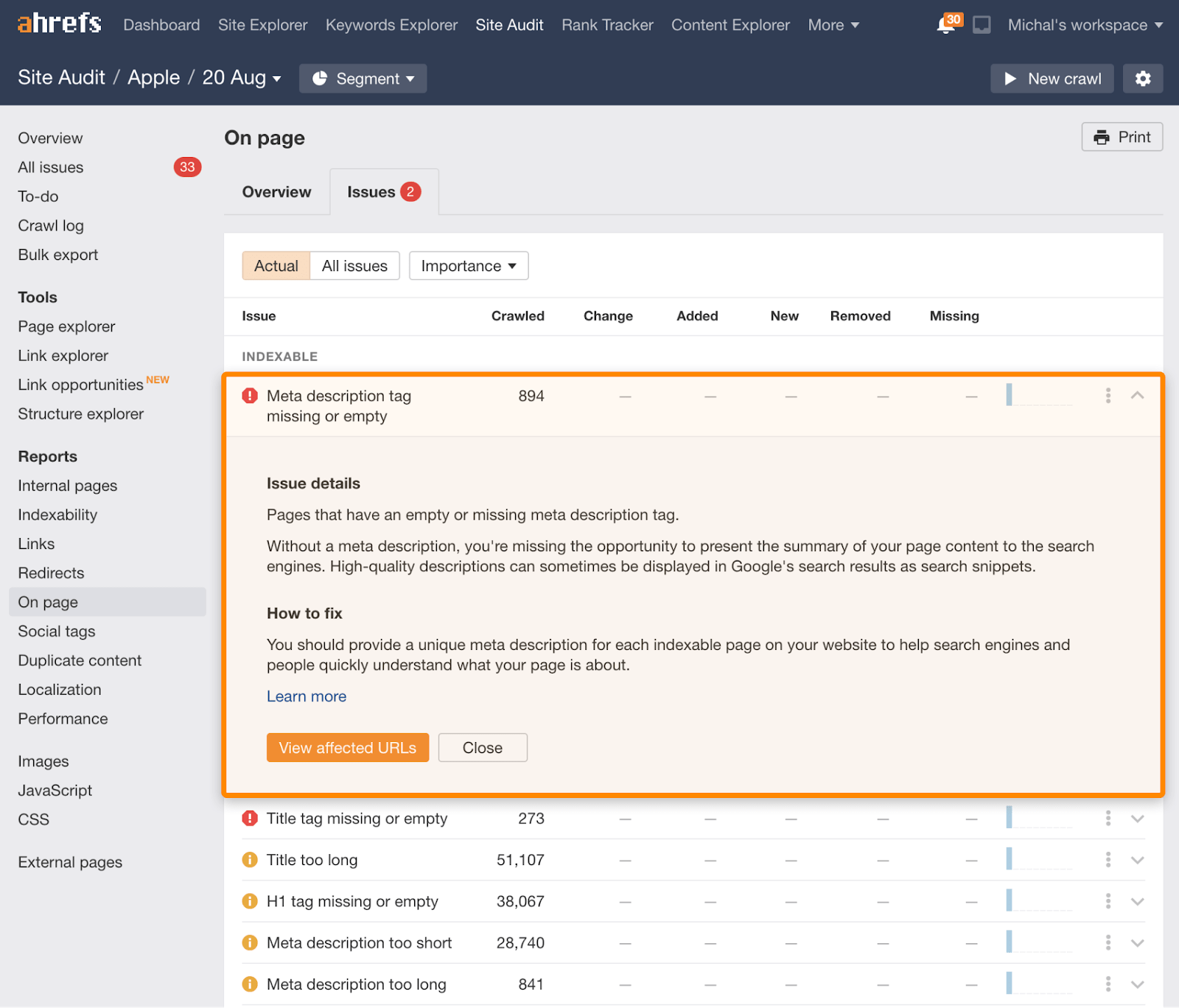
Click on the “View affected URLs” button to open the report and sort the pages by organic traffic to get the prioritization right:
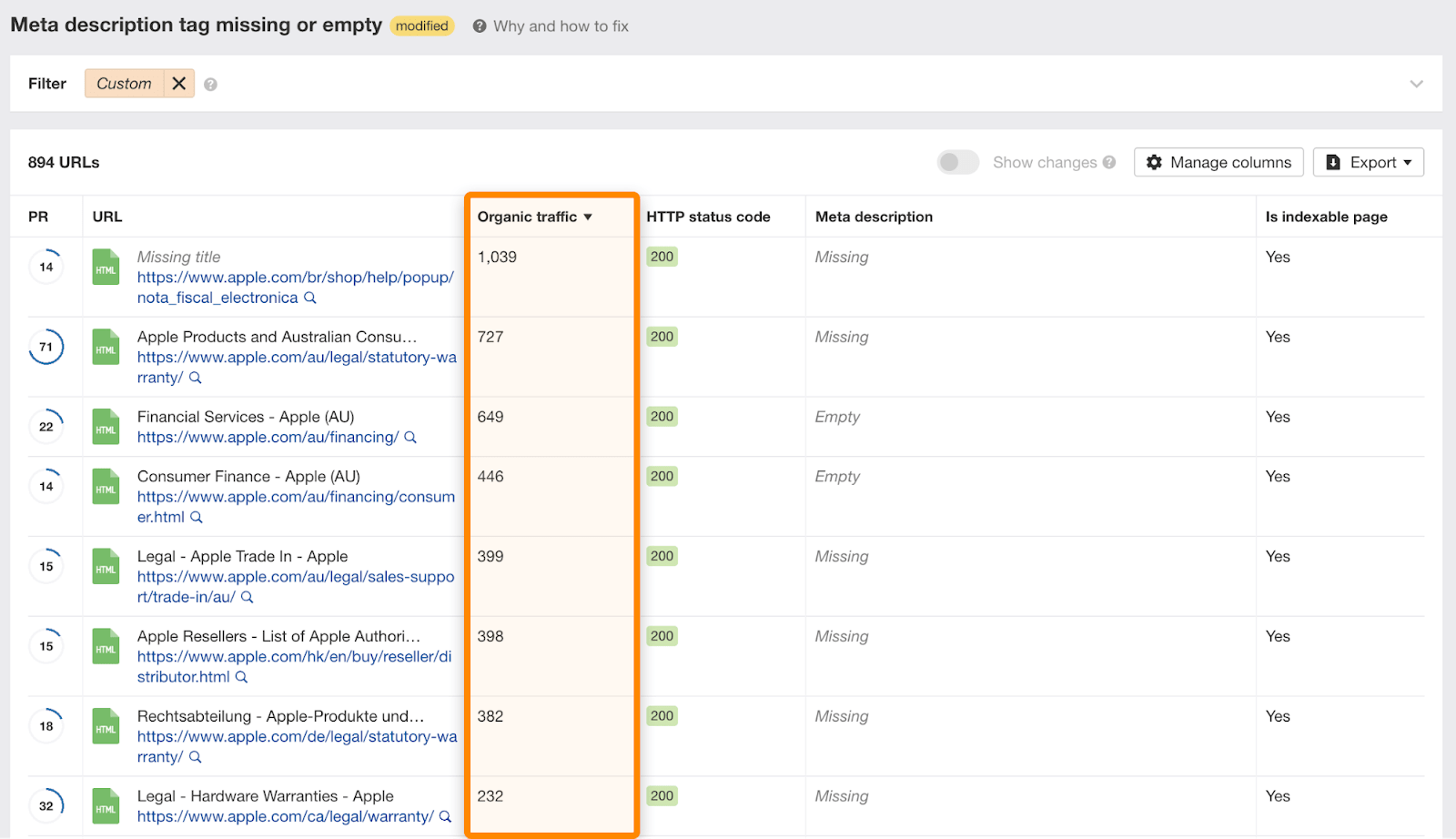
That was a pretty easy audit, right? What about some more writing inspiration?
Let’s wrap things up with a few examples of well-crafted meta descriptions across industries and search intents.
1. Healthline

Most searchers are seemingly looking for a definition here, so that’s what this meta description shows. It then prompts the reader to learn more about the benefits of glycine by clicking. Simple and efficient.
2. TimeOut

I thought that I would see mixed results of neighborhoods and hotels here, but the search results predominantly focus on Prague’s areas. And this description matches intent perfectly. It offers a solution in a concise, lighthearted, and actionable manner. Mentioning “five best “neighborhoods also tells the search they won’t have to spend an age reading it.
3. Patagonia

Here, the searcher is looking for sale items. I like the urgency signal initially; it feels more original and less aggressive than these tend to be. Then you see an affirmation of what you came for, ending with Patagonia’s distinctive asset: supporting sustainability and conservation.
4. Nordstrom

This is the epitome of a great e-commerce category page in the search results. It’s probable that Nordstrom lists their most popular types of coats and brands here. Free shipping is also likely a USP in these SERPs as only one other result mentioned it.
5. Shopify
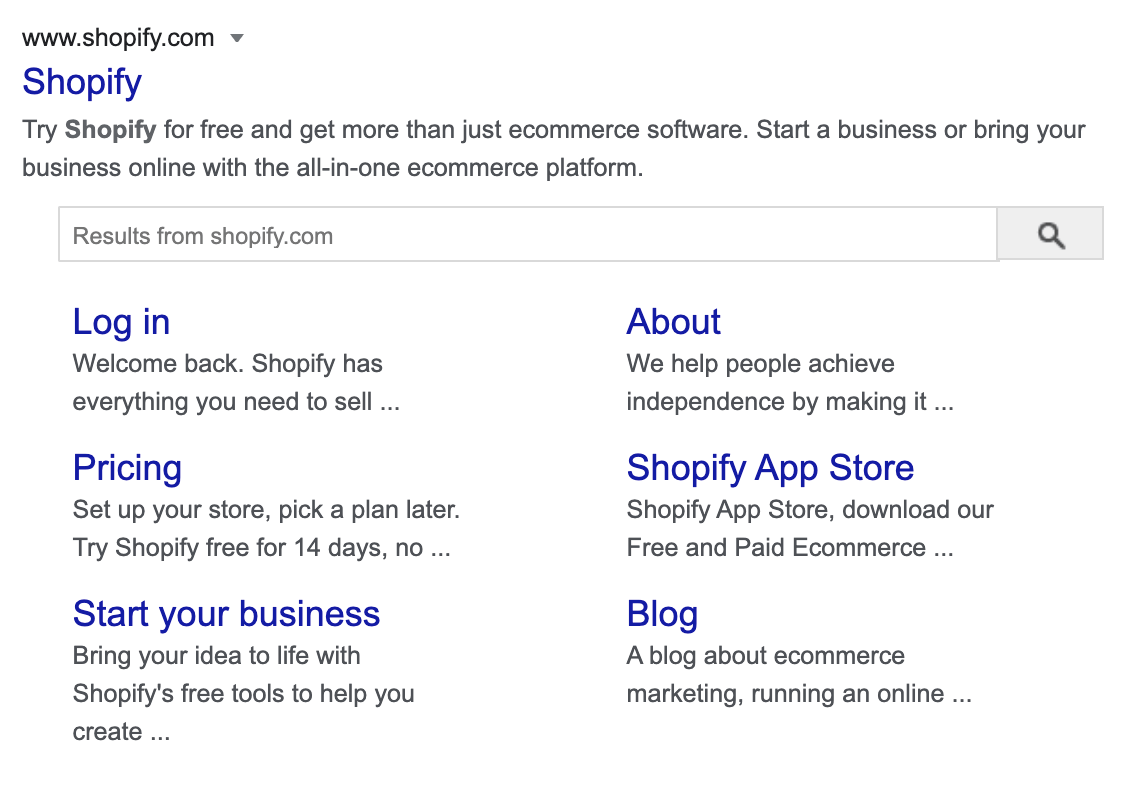
Our last example is a homepage. This a category of its own because you have to reflect your brand and what you do. Shopify does this well. It’s clear and prompts you to try the service for free.
Your homepage is the only page where I’d advise spending more time on the meta description because it mostly appears for branded queries where the intent is clear. As a result, Google is more likely to show the meta description in the SERPs.
Final thoughts
Meta descriptions are one of the first topics most people encounter upon entering the world of SEO. Luckily, it’s also one of the easiest to understand and master, so you won’t ever have to spend much time on it.
For more things that move the needle in SEO, check out our list of actionable SEO tips.
Got any questions? Feel free to ping me on Twitter.
